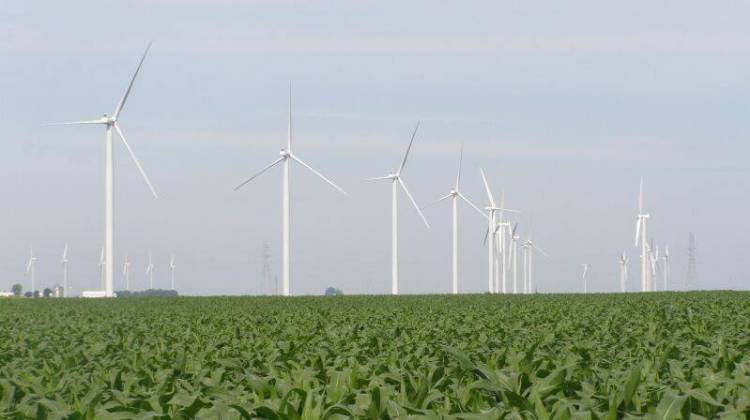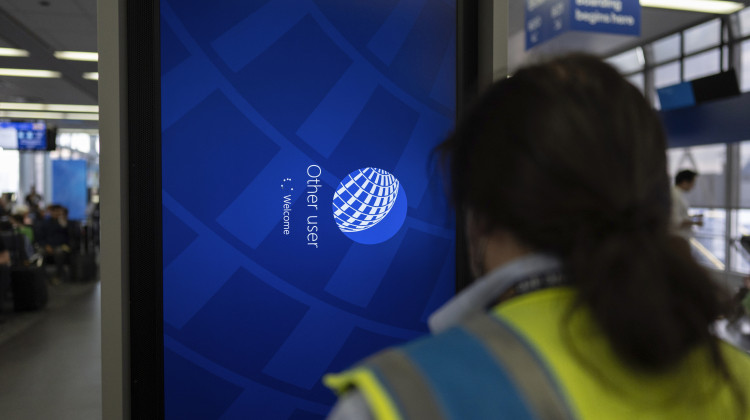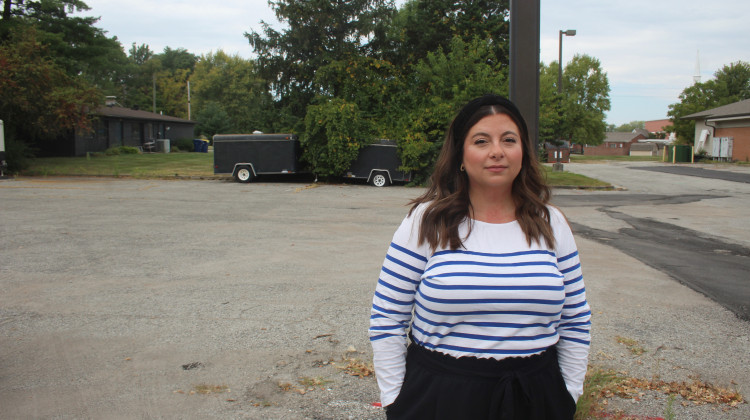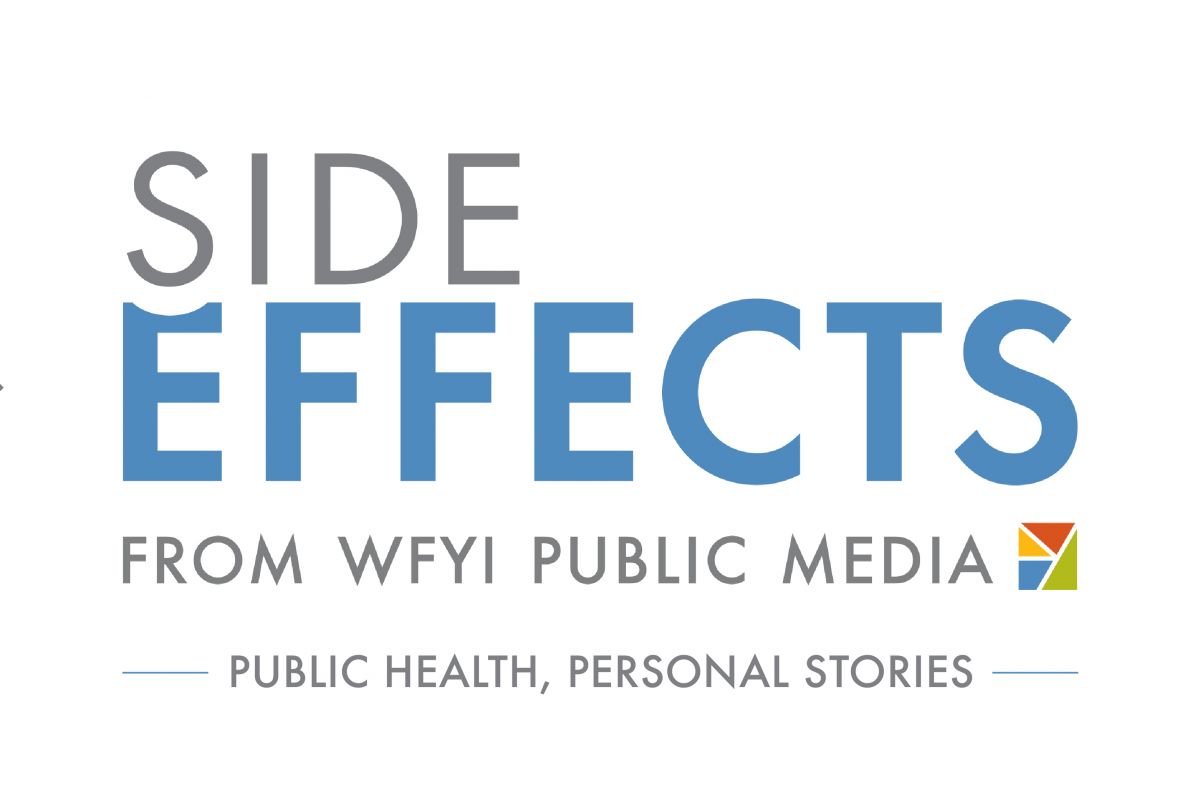
In 2007, Indiana had no large wind turbines. By 2009, more than 600 turbines -- like these in Benton County -- produced enough energy to power nearly 400,000 homes.
Chris Light, CC-BY-SA-3.0FORT WAYNE, Ind. -- The northern half of Indiana has long been touted as a good place to invest in wind energy — the state has the 12th most wind turbines in the country. But just because companies are investing in wind infrastructure, doesn’t mean the industry is booming quite the way it once was.
In 2007, Indiana had no large wind turbines. By 2009, the state’s more than 600 turbines produced enough energy to power nearly 400,000 homes.
Chad Martin, an extension specialist at Purdue University, said that made Indiana the fastest growing wind development state in the country. Martin is a resource for landowners and county governments that are interested in wind development. He said the wind industry took off in Indiana for three key reasons.
First, a strong wind resource: 300 feet above the ground wind speeds can reach 45 miles per hour, which is ideal for generating energy.
The second reason is the state’s agriculture industry. Flat land with low population density is the perfect place to build a wind farm.
And the third reason is the how the power grid is laid out.
“One of the primary, you know, drivers initially with the development of wind in Indiana was our access to viable transmission,” Martin said.
Think of the grid like a bunch of train tracks, delivering passengers—or, in this case, energy. That makes Indiana the train station, where everything intersects. So, it’s fairly economical to transmit Indiana's wind energy to Ohio, Virginia, and even North Carolina.
“So what it amounted to is, early in the phase, we were a net exporter of power,” Martin said.
And that’s lucky, according to Brian Bergsma, Indiana-Michigan Power’s communications director, renewable energy is still expensive.
“Wind was a resource that was cost prohibitive” 10-20 years ago, Bergsma said.
Local utilities like I&M do buy and sell wind energy made in state.
“Wind has become more affordable, as has solar. Now, they are not as affordable as our traditional baseload resources: coal, natural gas,” Bergsma said.
But these local utilities can only buy so much. From 2007-2009, investors could sell this energy out of state, too. The amount of power generated by turbines increased 650 percent over that period.
But that number dropped to 14 percent between 2013 and 2015.
Martin said markets are responding to uncertainty surrounding federal energy policy, like the Environmental Protection Agency’s Clean Power Plan. It aims to promote greener energy production—like wind—but it’s tied up in a court challenge.
Martin said, because of this, utilities are hesitant to sign long term deals to buy wind power.
“It’s really a challenge, very much a challenge for these utility companies to be able to provide a service to these communities and individuals and homes and businesses with low-cost energy with a lot of these unknown variables,” Martin said.
But this doesn’t stop everything. The developers, the people who actually build wind farms, don’t want to stop investing because they have a tax incentive to build now. The federal tax credit for wind development expires in 2020, and there is no guarantee it will be renewed.
“There’s a hurry and wait aspect for the developments that occur,” Martin said.
In addition to regulatory uncertainty, there are other challenges. Some residents who live next to wind turbines say they’re noisy and the rotating blades act like a strobe light. There isn’t much independent research on the health effects of wind farms, but Martin said the economic benefits are certain.
“The way that that project in White County has impacted that community, it doubled the tax valuation in that community,” Martin said. “So, all of a sudden that creates some additional viability for services, school, and roads and so on.”
Counties that do continue developing wind farms will be hoping for a similar outcome.
Nick Janzen reports on energy and environment issues every week on 89.1 WBOI in Fort Wayne.
 DONATE
DONATE








 Support WFYI. We can't do it without you.
Support WFYI. We can't do it without you.